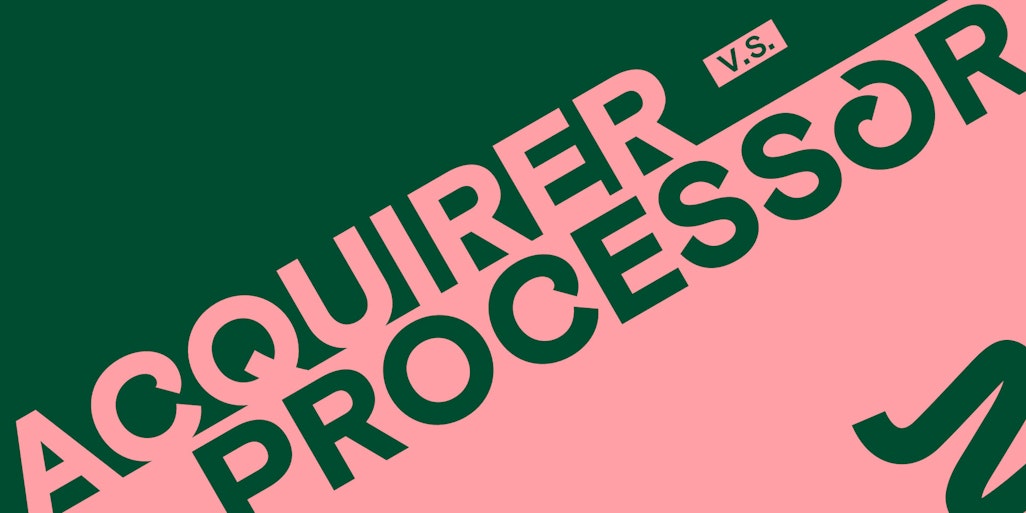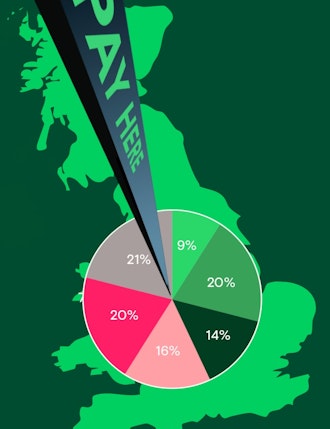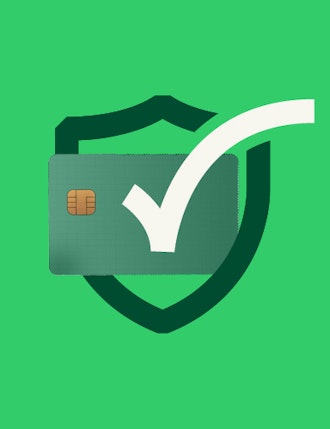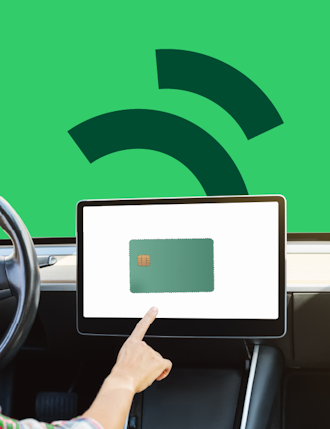When you first set up your business to take payments, you’ll see plenty of different terms used and a variety of organisations in the chain of payment. Sometimes, it can be difficult to get your head around. They each play an important role in the payment process, so you’ll need to understand what each is and what it does.
In this blog post, we’re focusing on the difference between merchant acquirers and payment processors. We’ll also look at a few other service providers too, to give you a wider picture of how things work.
What is a merchant acquirer?
A merchant acquirer, typically a bank, fulfils a crucial role in handling a merchant’s payment card transactions. They hold the merchant account and receive the deposits from sales. With a direct relationship with card networks like Visa and Mastercard, the acquirer enables merchants to process card transactions on these networks and assumes financial responsibility for the activity. The acquirer acts as an intermediary, processing and settling transactions with the card issuer or association. To uniquely identify payment transactions, merchants are assigned a Host Merchant ID or a similar identifier by the acquirer. While banks commonly serve as acquirers, other entities such as loyalty card acquirers, fleet card acquirers, or store/retailer acquirers can also fulfil this role.
What is a payment processor?
A payment processor (or sometimes “sub-acquirers”) will likely be a technology company, with the infrastructure to authorise transactions and move them from the merchant, through the card networks to a consumer’s bank and back again. Payment processors manage the process of moving the funds from the customer’s bank to a merchant bank. Its role is similar to that of an acquirer, but it doesn’t completely replace it. Thus, it can be also understood as a kind of intermediary player between the acquirer and the store.
What is the issuing bank?
The issuing bank refers to the bank or financial institution responsible for providing debit, credit, or prepaid cards to consumers on behalf of the card networks. It acts as an intermediary between cardholders, networks, and acquirers. The issuing bank’s role is crucial in determining whether a customer’s payment is accepted, as the information sent from the issuing bank validates the transaction. While consumers may believe that their credit cards are issued by MasterCard or Visa, these companies are payment transaction processors and not direct issuers of credit/debit cards. The issuing bank is also responsible for billing and collecting funds for purchases made using the card. In the payments value chain, the card issuer pays the acquiring bank for the cardholder’s purchases, and the cardholder repays the issuing bank according to the terms of their agreement.
The payment chain
For a little more clarity, let’s look at the payment chain in action.
- The customer pays via their debit or credit card.
- The transaction travels to your merchant account (provided by your merchant acquirer), where it waits for approval.
- The card company providing the customer’s card is alerted about the purchase.
- The card company contacts the customer’s bank (the issuing bank) to ensure enough money is in the account.
- The customer’s bank tells the card company that the funds are there to afford the purchase.
- The card company approves the transaction and the transaction remains in your merchant account while it’s been cleared.
Your merchant acquirer is responsible for providing your merchant account and giving you the capabilities to run card transactions. It is the payment processor that then facilitates each step of the above process and makes things happen.
Can the same entity be both a merchant acquirer and payment processor?
Often, the same entity provides both functions. Acquiring banks often offer payment processing as part of their service to clients. On the other hand payment processors can provide merchants with access to accounts through their existing relationships with acquiring banks.
If you can opt for a provider that offers both services, it eliminates the need to choose a suitable provider for each.
What are ISOs?
You may have seen the term ISO too. We’ll take a quick look at what this is, as well as detailing the difference between Retail ISOs and Wholesale ISOs.
ISO refers to an independent sales organisation and is effectively an intermediary that signs up merchants for an acquirer’s payment processing services. A Retail ISO is a simpler function and exists to source merchant customers on behalf of the merchant acquirer. Wholesale ISOs on the other hand still work on behalf of the acquirer but they take on many of the responsibilities of payment processing too. Ultimately, however, the bank is responsible for the movement of funds and any potential losses. The acquirer is therefore still a key piece of the relationship.
Today, however, ISOs are beginning to be phased out and be replaced by payment facilitators (PayFacs).
What is a payment facilitator?
A PayFac is a company that provides the infrastructure for businesses (referred to as sub-merchants) to begin accepting card payments. The PayFac will onboard and underwrite the sub-merchant and provide the technology needed to process electronic payments and receive the funds. They do the following:
- Onboard sub-merchants and perform full underwriting
- Monitor transactions for anomalous or suspicious behaviour
- Provide the funds to sub-merchants and reconcile their transactions
- Manage the chargeback process alongside the acquiring bank
For a payment facilitator to be able to function, they need two key relationships. The first is with an acquiring bank and the second is with a payment processor.
When you set up your business to take payments, it’s crucial to understand the steps in the process and to work with the appropriate entities to ensure it is a seamless process for your business and your customers. At Aevi, we work with merchant acquirers, specialist payments services providers (PSPs), ISVs, ISOs and financial institutions. Our platform is open, device-agnostic, and flexible. It enables payments and data to flow through any channels that may be required. It allows the entire payment chain to evolve.
Discover more about Aevi and what our platform can mean for the future of your business.











